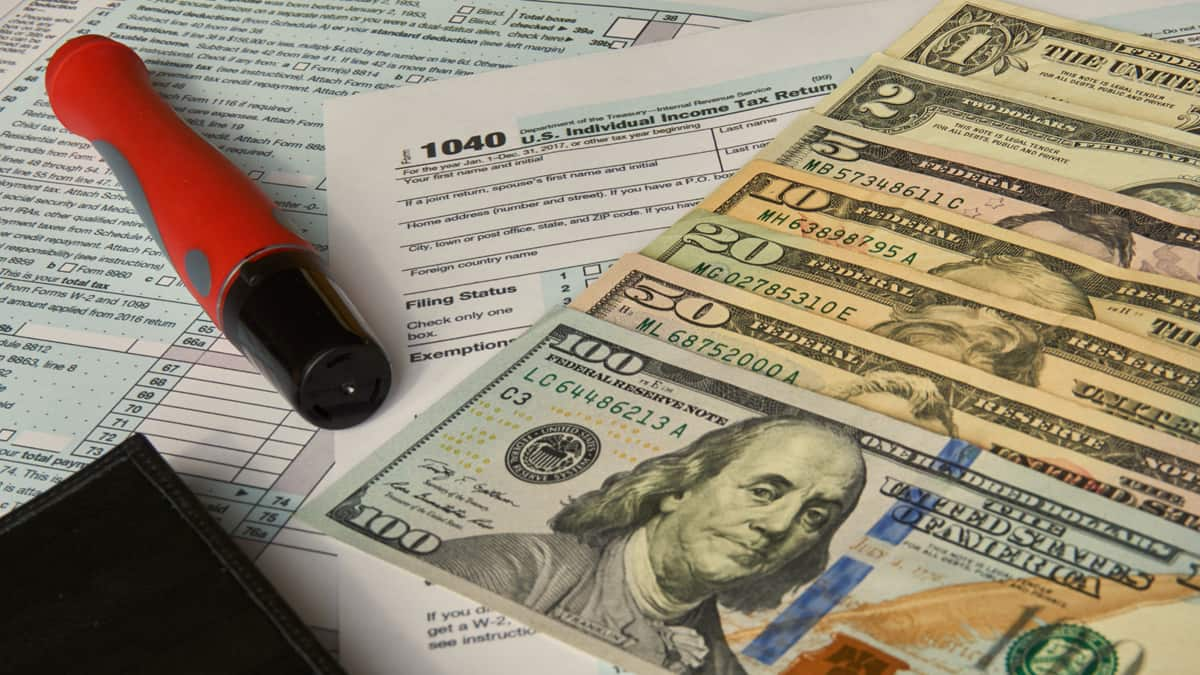How To Maximize Tax Return – Here’s How To Get The Most Money Back
Important Note: When you buy through our links, we may earn a commission. As an Amazon Associate we earn from qualifying purchases. Content, pricing, offers and availability are subject to change at any time - more info.
Everyone loves a tax refund. Come tax time, you’ll find many people looking for ways to not only minimize what they owe but also maximize their return.
Advertisement
Even though a tax refund is a money that you’re owed, the IRS does not make it easy for you to determine how much that amount should be. Luckily, by using a few strategies, you can figure out how much your refund on your taxable income should be and receive as much money back as possible.
If you want to find out how to maximize your tax return, we’ve got you covered. You’ll learn the different ways you can boost your tax refund to give you that extra little bit of cash every tax year.
How to Maximize Tax Return – 5 Ways
If you’re looking for ways on how to maximize your tax return, check out these strategies that you might be missing out on.
1. Take advantage of tax deductions
You may already know that deductions can help lighten your tax bill every year, but there are many deductions – for example, an itemized deduction or a mortgage interest deduction – that you may not be aware of.
Advertisement
Taking advantage of tax deductions that you are eligible for is one of the easiest ways to maximize your tax return.
Some of these deductions include:
- Charitable contributions – Keep track of both your big and small donations throughout the year. Even the small charitable donation can add up.
- Student loan interest – Did you know that your student loan interest is tax deductible, even if you didn’t pay it yourself? As long as you have student loans that you are obligated to pay, you can claim the interest.
- Dependent care – Depending on the number of dependents you have, you can claim up to $6,000 of qualifying expenses.
It’s important to note that you should always keep a record of your deductions, even if you don’t receive a receipt. The IRS can request these records to confirm your deduction up to three years prior. If you file a fraudulent return, this statute of limitation never expires.
2. Review your W-4
Whenever you start a new job, your employer asks you to fill out a W-4 form so that they may know how much federal income tax to withhold from your paycheck. If you aren’t receiving as big a return as you’re hoping for, this might be the reason.
Having less tax withheld will give you a bigger paycheck, but it will also give you a smaller refund, no refund, or even cause you to owe money.
If you have additional income or a second job, make sure that you adjust your withholding to ensure that you are paying the right amount in taxes for your total income. This way, you will avoid any surprises that may happen during tax season.
Advertisement
You should note that if you choose to have more money withheld throughout the year for a bigger tax return, you aren’t saving any money. You’re being given money that was already yours. It’s best to only have as much as you need withheld and use tax deductions to help you save money and maximize your federal tax return.
3. Make sure you have the right filing status
There are five filing statuses to choose from, but you’ll most likely select:
- Married filing jointly
- Married filing separately
- Single
Your filing status greatly influences your refund. It determines:
- Filing requirements
- Standard deduction
- Eligibility for credits
Last but not least, your filing status determines the size of your refund. Contrary to popular belief, filing jointly while married doesn’t always result in the highest tax refund. Consult with a tax expert to ensure that you select the filing status that best suits your financial situation.
4. Save for retirement
When you make contributions to your IRA, you can receive a tax deduction of up to $6,000. If you’re over the age of 50, the deduction is up to $7,000.
You may also qualify for a saver’s tax credit. The IRS is allowing you to double up this year, giving you an extra credit of up to $1,000 when you contribute to your retirement.
Be sure to make your contribution before the filing deadline to have the benefits apply for that year.
Advertisement
5. Consult a professional
If you find that you aren’t receiving the tax refund you want and can’t figure out why it may be time to hire a tax professional to help you out. Enlisting the help of a tax expert is an especially good idea if you’ve moved states, purchased a new home or had a baby during the year.
Getting the help of an accountant or financial advisor may reveal that you qualify for more credits and deductions than you previously thought. This is because these professionals can assess the full scope of your situation and will catch things you may miss.
Although you will have to pay for the services of a tax professional, you may end up getting a large refund that you would not have gotten without them.
Maximizing Your Tax Return Means More Money In Your Pocket
Let’s face it, one of the only things there is to look forward to during tax season is a large refund and extra money in your pocket. By learning how to maximize your tax return, you’ll not only save yourself money every year, but you might also end up getting more money back than you could have ever anticipated.
If you think that you’ve been missing out on potential refunds in the past couple years, remember that you can amend your refund up to three years after the original filing date. You can request copies of your tax records from the IRS by phone, by mail, or online.




 Please Support Me on Ko-fi
Please Support Me on Ko-fi